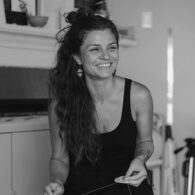Small Ways to Keep Ourselves Whole
Please click the arrows on the image above in order to advance the slideshow.
Editor’s note:
Carrie Allison’s beadwork connects her to her ancestral lands and her own backyard. As an artist of nêhiýaw/Cree, Métis, and European descent, Allison uses beading techniques to practice kinship with both people and land, slowly recording the living landscape. In this visual essay, Allison has walked the limited territory available to her during the 2020-2021 pandemic quarantine, paying close attention to the colors and shapes of plants (both indigenous and foreign) that grow in K’jipuktuk (Halifax, Nova Scotia). These plants, encountered in the yard of her house or on walks with her dog, have rewarded her search for beauty in a year of fear.
Allison’s text, both with and against her images, plants survey flags that mark the ground of ongoing colonial violence. In April 2020, near the beginning of the pandemic, Nova Scotia endured the deaths of twenty-two people in what was widely reported as the most deadly mass shooting in Canadian history. In fact, an even deadlier shooting occurred on June 1, 1873, when twenty-three Assiniboine people were shot by a party of wolf hunters. That massacre was an instigating factor in the formation of the Royal Canadian Mounted Police, which has itself been a long-standing force of colonial violence.
How do our everyday details, little flashes of life close to the ground, manage to weave such an expansive and glittering carpet down there? How granular, how beautiful and terrifying, are the long histories of our soil? Allison meets each sprout and each color face-to-face.
—Sara Clugage



Dilettante Mail
Get updates from us a few times a year.